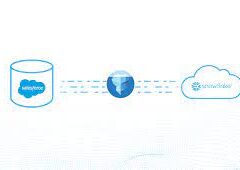Can Salesforce be seamlessly integrated with Canvas?
The integration of Salesforce and Canvas is made effortless through the Tray Platform’s robust connectors for Salesforce and Canvas. These connectors are designed to connect with any service without the need for additional integration tools.
Canvas facilitates the easy integration of third-party applications within Salesforce. It comprises a set of tools and JavaScript APIs that allow you to expose an application as a canvas app. This implies that you can make your new or existing applications accessible to users as part of their Salesforce experience without the need for extensive redesign or reintegration.
Canvas provides tools to manage various aspects, including:
- Authentication: Implement authorization using a signed request or OAuth 2.0 if your application requires it.
- Context: Utilize API support to retrieve context information about the environment in which the canvas app is running.
- Cross-domain XHR: Leverage JavaScript support for cross-domain XML HTTP requests back to the Salesforce domain.
- Resizing: Use methods that support the ability to resize your canvas app.
- Events: Facilitate communication between multiple canvas apps on a single page using JavaScript-based events.
- Canvas Apps in Aura: Expose your canvas app in a custom Aura component.
- Canvas Apps in Visualforce: Integrate your canvas app on a Visualforce page.
- Canvas Apps in the Publisher: Add a canvas app as a custom action and expand the publisher to include a canvas app.
- Canvas Apps in the Chatter Feed: Expose your canvas apps as feed items.
- Canvas in the Salesforce Mobile App: Make your canvas apps available in the Salesforce mobile app.
The third-party app you wish to expose as a canvas app can be written in any language, with the only requirement being a secure URL (HTTPS).
Other integration options to consider before opting for Canvas include:
- Web tabs: Present third-party applications as part of a page, offering a full application in a large screen space.
- HTML iframes in a custom component: Although Canvas apps provide more functionality than iframes, iframes may be simpler to integrate with your application.
How do I open a Canvas app in Salesforce?
To view canvas apps in the navigation menu, log in to Salesforce mobile web. The Canvas app displays in the call control tool when Open CTI is selected in the call center’s definition file. Additionally, the Canvas app can be displayed in the publisher.
What is the Canvas app used for?
Canvas apps are ideal for constructing task-based or role-based applications. For instance, a team within the customer service department responsible for creating support tickets can efficiently use Canvas apps for this purpose.
What are two features of a Canvas app?
Two features of a Canvas app include:
- Display and Edit form: An experimental feature that allows the addition of dynamic forms, enabling users to view, navigate, and edit relational data from the Microsoft Dataverse.
- Export: This feature enables the export of data for use elsewhere in Power Apps. Additionally, the Gallery feature allows the presentation of a list of records containing multiple types of data.












